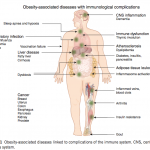

When I first found, and started Leangains Intermittent Fasting, I was still looking for *the* diet. You know what I mean. The diet to end all diets.Instead I found something better.I didn’t need another diet. What I really needed was an education.When I finally got an education in nutrition (through a combination of blogs, textbooks, Physiology class, and lots of reading about research), I finally became free from “dieting”. You can see the evolution of my education in my 2 previous posts on this blog here and here, about my experiences with Leangains and Intermittent fasting, from November 2011 to now.This post is not to tell you anything about intermittent fasting, Leangains or how to “diet”.If you are still confused, dogmatic, frustrated, searching or any other adjective connected to what you eat or look like, that would compel you to read a diet blog post; you are uneducated.Don’t be offended.
View original:






 For now classes are 6pm and 640pm at 2840 Wildwood st in the Boise Cloggers studio.
Book your class NOW!
click this ==>
For now classes are 6pm and 640pm at 2840 Wildwood st in the Boise Cloggers studio.
Book your class NOW!
click this ==>








